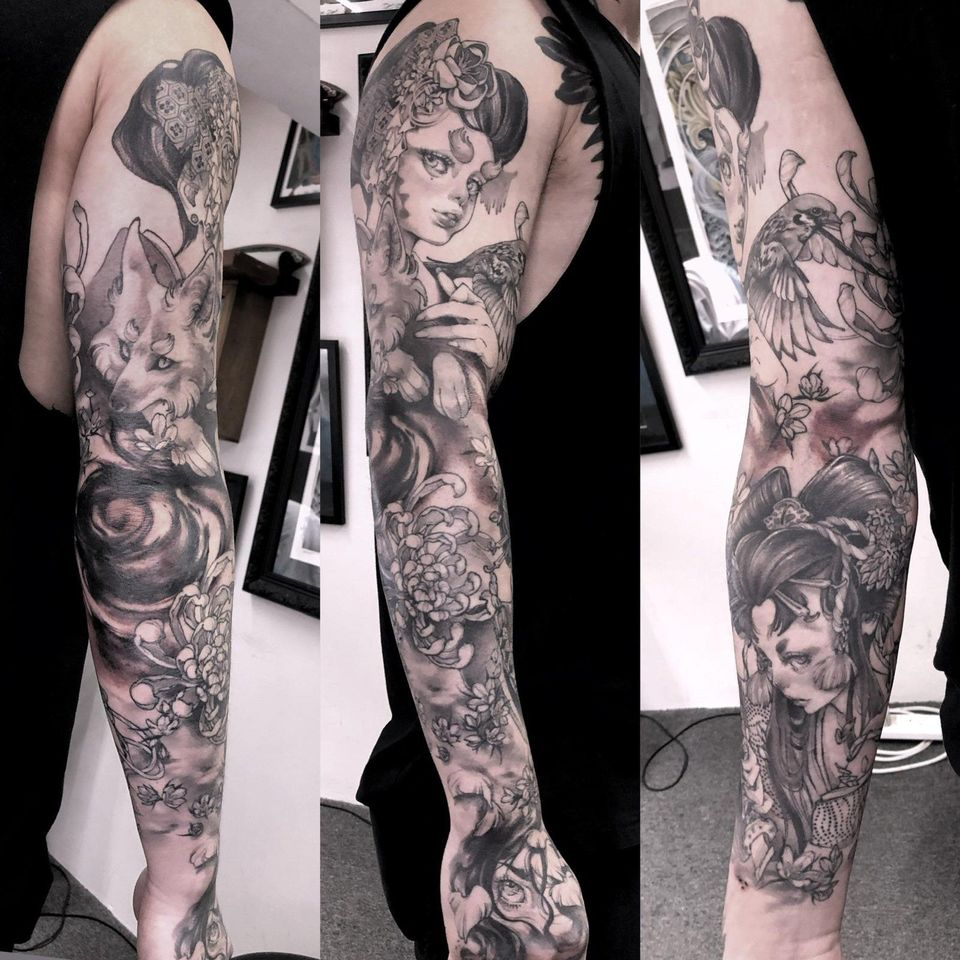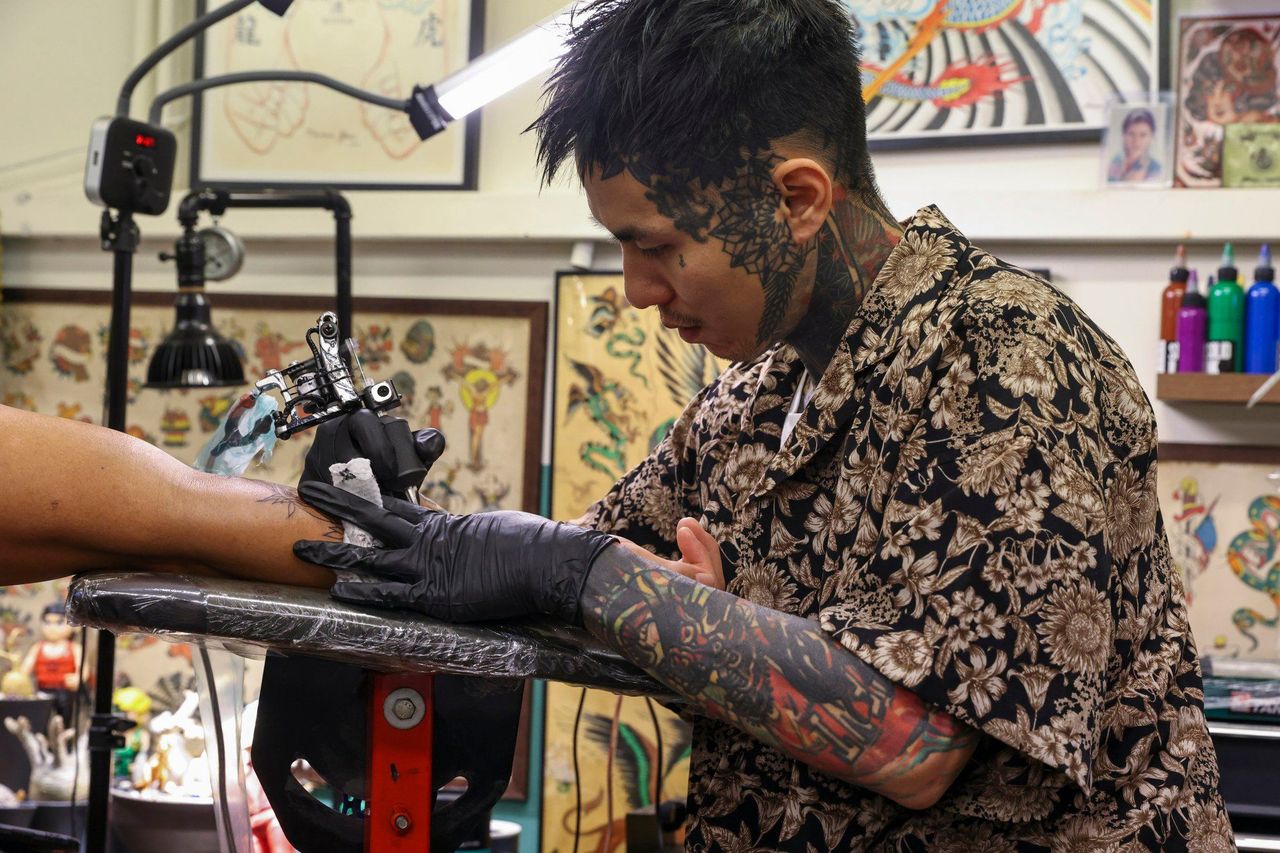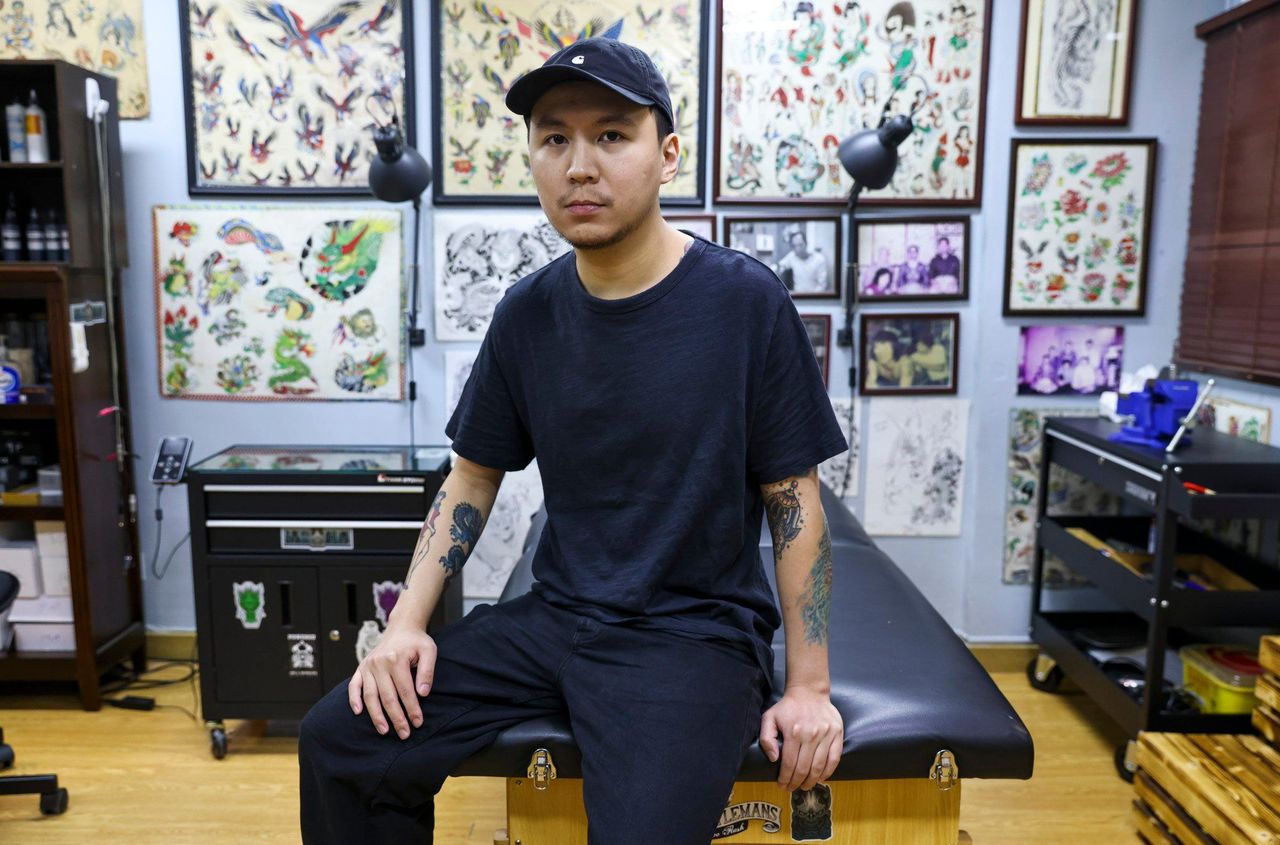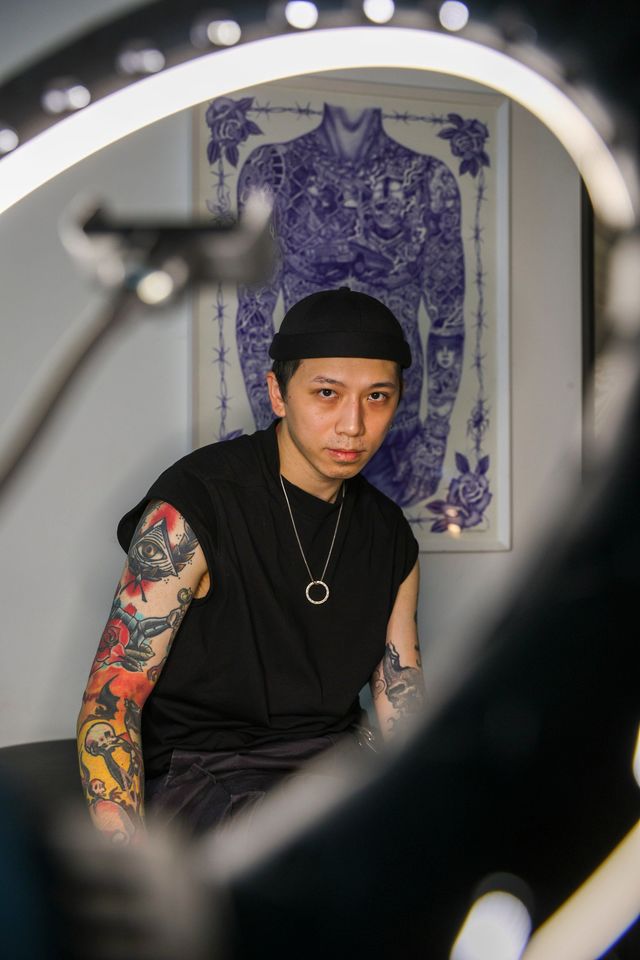Hong Kong News

How tattoos can ink out pandemic boredom for some in Hong Kong
Stuck in Hong Kong with nowhere to go during the Covid-19 pandemic, sushi chef Joey Lau, 32, chose to get some body art done.
“I had a lot of money saved up and couldn’t travel or do much with it, so I decided to get my first tattoo,” said the Australian-born Hongkonger who has been working at Zuma restaurant in Central since 2019.
That “sushi-dragon” design on his forearm got him started on his tattoo collection, leading to 14 more on both arms and his chest. The latest addition is a snow leopard on his left thigh.
After spending close to HK$100,000 (US$12,742) in two years, he has not decided yet if it is time to stop. He is considering doing even more.
Hong Kong’s tattoo artists lost a lot of their customers when the Covid-19 pandemic stopped tourists from visiting, but local customers like Lau have kept them going.
They say residents confined to the city for more than two years by travel restrictions have taken to getting tattoos, including elaborate designs that cost thousands of dollars and require several sessions of inking.
Well-known tattoo artist Dust Wu Shun-weng, 42, owner of the Galaxy Tattoo studio in Sai Ying Pun, said that before the pandemic, almost a third of his clients were tourists.
“These days, I get work from around 20 regular clients, which is enough to keep me busy for years,” he said.
After nearly two decades in the business, he is recognised for his prowess at Japanese old school tattoos, characterised by multiple designs over large areas of the body.
The most popular motifs include images of geishas, samurai, tigers and dragons. A single client might need several trips over a number of years before the whole tattoo is completed.
Tattoo artist Mari Cheung Yik-yee, 36, who works at Wu’s studio and has been in the industry for six years, said it took about 18 hours over about five sessions to tattoo a mural of geishas, a wolf and a background of flowers over the whole of Lau’s right arm.
It turned out to be one of her favourite works, she said, because she had full freedom in inking a large area.
 Works by tattoo artist Mari Cheung.
Works by tattoo artist Mari Cheung.
Hundreds of tattoo studios have sprung up across the city over the past decade, ranging from small ones with a single tattooist to larger studios with five or six artists.
The customers are men and women, mostly in their 20s to late 30s, although the artists said people in their 60s and 70s also sometimes turned up for a tattoo, as did doctors and lawyers.
Prices vary according to the expertise of the artist, the size or intricacy of the design, and the time it takes. The average going rate is HK$1,500 per hour, and a palm-sized tattoo could cost HK$600.
Popular tattoo culture took off in Hong Kong from the 1950s to the 1970s, when American sailors and servicemen who visited during the Korean and Vietnam wars got themselves tattooed with images of flags, anchors and eagles, among others, to mark their stay.
Over the years, Hong Kong style tattoos developed, combining Japanese and Western techniques and motifs with added Chinese influences.
Some tattooists said more of their customers preferred traditional Hong Kong designs once associated with gangsters and triad members. These are characterised by bright colours and mythical animals like the dragon and phoenix.
 Marcus Yuen, owner of The 59 Tattoo and Barber Shop in To Kwa Wan.
Marcus Yuen, owner of The 59 Tattoo and Barber Shop in To Kwa Wan.
Marcus Yuen Lok-yin, 32, a tattooist for more than 11 years and owner of The 59 Tattoo and Barber Shop in To Kwa Wan, said: “When I first began, not a lot of people liked these tattoos as they were associated with crime and gangsters, but today people feel they are not only great designs but also representative of Hong Kong.”
It can take one to three hours to ink a dragon design on a forearm, or up to 60 hours for a full back tattoo.
 Justin Ng from Jimmy & Justin Tattoo in Mong Kok.
Justin Ng from Jimmy & Justin Tattoo in Mong Kok.
One of the city’s oldest studios is Jimmy & Justin Tattoo in Mong Kok, which has been around since the 1970s. Owner Jimmy Ho Hui-min inherited the place from his father, James Ho Au-cai, who is regarded as a pioneer.
The studio is now run by Justin Ng Jun-tian, 29, who took over the business when Jimmy Ho, his teacher and mentor, retired two years ago.
“It was during Jimmy’s time in the 1970s and 1980s that artists began to do more Asian style tattoos – a dragon and eagle together is uniquely a Hong Kong tattoo,” Ng said. “More artists are doing Hong Kong style tattoos, which is great because the style is developing and getting better.”
Italian expatriate Martina Igini, 25, who works in Hong Kong as an assistant editor, got her first tattoo early last year.
After being stuck in the city during the pandemic, she decided to spend HK$3,000 of her savings on a tattoo of a butterfly on her arm.
She went to Jonathon Tsang Ka-hei, 29, at Tennin Tattoos in Causeway Bay and he showed her various old school designs.
“I love Asian designs and the colour combinations of Hong Kong tattoos are what makes this style so different from what you typically see in Europe,” said Igini.
 Alfred Ng from Palm Alley studio in Kwai Chung.
Alfred Ng from Palm Alley studio in Kwai Chung.
Alfred Ng, 33, worked as an artist for five years before opening his Palm Alley studio in Kwai Chung two years ago, adding to the diversity of modern Hong Kong tattoos.
His team of six draws on traditional Western religious and medieval motifs, using a modern fine line technique for their tattoos.
“I want my studio to be a gateway for artists to start their journey in the industry and also for clients looking to start their collection and find the design that suits them,” he said.
Despite the challenges posed by the pandemic, tattoo artist Yuen felt the industry had potential to grow as more people learned to appreciate tattoos as an art form.
“Hong Kong old school tattoos are an art, and much more than just a design,” he said.











